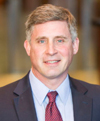In October, I traveled to Asia with stops in China and South Korea. While in China, I gave a talk on 5G at the Wireless Communications and Signal Processing conference (WCSP) in beautiful Yangzhou. I met with several researchers at the conference and was also able to travel to Nanjing to meet with professors at Southeast University (SEU). As you can imagine, wireless researchers are focused on mmWave and Massive MIMO.
While discussing mmWave, I conducted an informal survey with a central question of, “what is your frequency range of interest”. Although my informal poll is far from definitive, there was a lot of interest in 28 GHz. This is a bit surprising considering China has yet to officially designate mmWave spectrum for 5G. Additionally, it appears that spectrum around 28 GHz could pose a challenge in this region. I expect we’ll be hearing more on this in the near future, so stay tuned.
On the Massive MIMO front, Prof Xiqi Gao at SEU is exploring a new Massive MIMO technique called Beam Division Multiple Access (BDMA). This technique uses orthogonal beams to provide access to mobile users at the base station spatially, and his team plans to build the world’s first working BDMA Massive MIMO prototype.
Next I traveled to Seoul, South Korea where I attended the International Conference on Information and Communication Technology Convergence (ICTC) in Jeju Island. My industry presentation at ICTC focused on wireless research and the role software defined radios play in the design validation and the standardization process. While the conference covered many topics, much of the discussion was centered around 5G, from network to applications.
While in Korea, I was also able to meet with several researchers around the country including professors at UNTI, Seoul National University, Yonsei and ETRI. All the researchers have a keen interest in 5G and a spirited interest in prototyping. I was encouraged to chat at length with several researchers about how LabVIEW Communications and the USRP RIO are impacting 5G wireless research in areas such as Full Duplex Radio, LTE and WiFi coexistence, and V2X. In particular, I wanted to highlight the work of Prof Chan-Byoung Chae at Yonsei University. Our lead user team has been working with Prof Chae in the area of Full Duplex Radio for several years and at NIDays in Seoul, Prof Chae and his students demonstrated a working full duplex radio system using the NI platform to prototype a full duplex radio system capable of transmitting and receiving a full 120 MHz wide channel – the widest bandwidth ever demonstrated!
We’re seeing exciting developments on the 5G front every day. Next month I’ll be attending the 3GPP plenary meeting in Vienna. Look for updates from that meeting in my next post.

